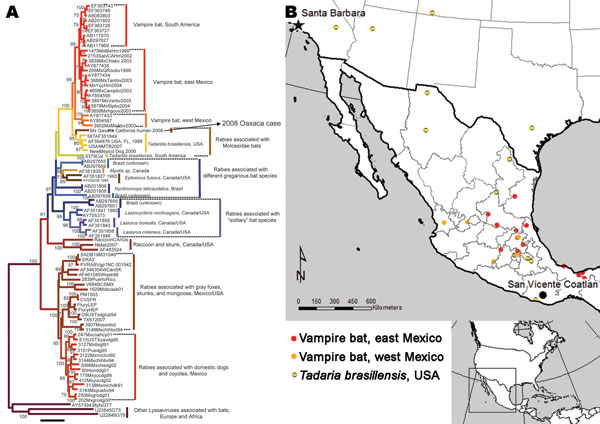Volume 14, Number 12—December 2008
Dispatch
Identification of New Rabies Virus Variant in Mexican Immigrant
Figure 2

Figure 2. Phylogenetic tree of complete lyssavirus nucleoprotein genes, comparing the patient isolate with representative rabies virus variants associated with common New World animal reservoirs. The map shows the locations of representative samples associated with rabies transmitted by Tadarida brasiliensis and vampire bats used in the analysis.
Page created: July 22, 2010
Page updated: July 22, 2010
Page reviewed: July 22, 2010
The conclusions, findings, and opinions expressed by authors contributing to this journal do not necessarily reflect the official position of the U.S. Department of Health and Human Services, the Public Health Service, the Centers for Disease Control and Prevention, or the authors' affiliated institutions. Use of trade names is for identification only and does not imply endorsement by any of the groups named above.